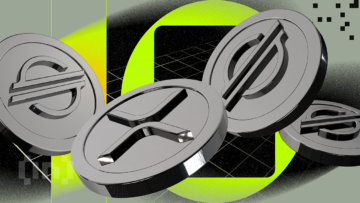Stablecoins are an exciting prospect. The digital representation of a physical asset provides countless opportunities to improve the world’s current economy. However, one must note that with stablecoins comes a necessary extra step: stablecoin regulation.
Unfortunately for crypto enthusiasts, regulation is really the only way any of these stablecoins will make it to the mainstream. It ensures big, institutional investors will involve themselves, which provides more legitimacy than most actions. And, considering cryptocurrencies are global, regulation will differ in various countries. Let’s break it down.
What are stablecoins?

Put simply, a stablecoin is a cryptocurrency tied to the value of a physical asset. It’s basically a way to harness the power of blockchain technology without suffering from volatility and other issues inherent with it.
Most stablecoins are Ethereum-based, such as Tether (USDT) and True USD (TUSD), which reference the US dollar. These assets have been around almost as long as bitcoin and other cryptocurrencies, with some referencing those as well.
Are stablecoins a security?
There has been no official regulation on stablecoins so far, at least in the United States. However, Securities and Exchange Commission Chairman Gary Gensler has hinted at stablecoins like PAX and BUSD falling under securities laws.
His decision comes from the fact that the value of securities often determine stablecoins, so the digital counterparts should fall under those same rules. This opinion will likely come into effect upon stablecoin regulation implementation.
How does stablecoin lending work?
Investors often use stablecoins for lending and borrowing on different decentralized applications (dApps). Mostly based on the Ethereum blockchain, these dApps allow those with liquidity to lend out their funds. One easy way to do so is with stablecoins — especially those tied to the US dollar.
If a borrower wants to avoid volatility and focus more on simply acquiring a loan, stablecoins are a convenient solution. Traditional legal processes can take days and cost extra, but stablecoin loans materialize within hours. They also get some say in how to pay back that loan in terms of interest rates and minimum payments.
What is considered a stablecoin?
Any cryptocurrency that’s tied to a physical asset is considered a stablecoin. That’s because these assets don’t have inherent value, like bitcoin. Rather, stablecoins inherit their value from assets they’re tied to. One such asset is fiat currency like the US dollar.
Are stablecoins regulated?
Yes and no. In some cases, stablecoins are regulated based on overall laws that affect cryptocurrencies. That said, there is very little stablecoin regulation that focuses only on this type of digital asset. This is a matter that officials across the world are closely examining.
Considering stablecoins are quite different from traditional crypto, this is a problem. Countries need specific regulations for stablecoins to exist as they are. As we shall see, the laws tend to vary somewhat, so regulation is a very jurisdictional concern.
Stablecoin regulation around the world
Here’s a list of stablecoin regulations all around the world.
/Related
More ArticlesUnited States

As mentioned previously, stablecoin regulation in the United States is not very specific. There are hints of the SEC regulating (most) of the assets as securities, but this hasn’t been confirmed just yet. The U.S. may be holding off on the matter, as it could be preparing a digital dollar announcement.
Plus, there are various groups such as the Financial Crimes Enforcement Network (FinCEN), the Office of the Comptroller of the Currency (OOC), and the Commodity Futures Trading Commission (CFTC), that must apply their own federal regulations to stablecoins.
States can also have their own regulations on top of the federal ones, making this scenario even more complicated. U.S. Treasury Secretary Janet Yellen recently led a discussion on stablecoin regulation, indicating that a framework may be on the horizon.
European Union

Earlier this year, the EU published a regulation on cryptocurrencies, with a large part specifically focusing on stablecoins.
With the title of “Markets in Crypto-Assets Regulation (MiCA),” the document states that stablecoins, while similar to traditional investments, can generate more annual interest by lending on decentralized platforms. Because of this, the new stablecoin regulation requires that stablecoins register with regulatory groups for anyone to legally trade them.
This could also affect stablecoin lending interest rates, with details stating it might prevent earning interest on stablecoins entirely. The implementation of so many regulations will likely put off many stablecoin issuers, ensuring they’ll never take a place in the EU economy.
Some analysts suggest that these regulations came into effect shortly after Facebook’s Libra announcement. Libra scared various regulators around the world, forcing their hand and having them rush out stablecoin regulation that attacks the digital assets rather than works with them. Time will tell whether this will last or not.
China

China notes that any activities related to digital currencies are illegal — especially the buying and use of them. It has also banned financial institutions from offering any crypto-related services. These policies obviously carry over to stablecoin regulation as well.
That said, citizens who already had cryptocurrencies can still hold them. It could be that this decision precedes the implementation of a stablecoin issued by the Chinese Central bank in the near future.
Japan

Japan has been working to regulate cryptocurrencies across the board. But, similar to the U.S., it’s likely that stablecoins will receive unique regulation due to their odd nature.
The country may not even regulate stablecoins as a cryptocurrency, but rather apply policies based on the physical asset they’re backed by.
Singapore

Singapore, a highly progressive country, claims that stablecoins meet regulatory standards if the Securities and Futures Act (SFA) is applicable.
However, falling under those regulations requires care and consideration before launching a stablecoin there. Assuming the digital asset can work with these rulings, it should have no problems operating in the Singaporean economy.
Middle East

Middle Eastern countries vary in terms of stablecoin regulation. Some of them have their own policies when it comes to stablecoins and cryptocurrency in general. Others, such as the region of Dubai, have rules not unlike the European Union’s implementation of the regulation.
Essentially, there are two forms of jurisdiction: financial free zones and onshore zones. Dubai would fall under the former category, with general U.K. regulations applying. That said, the Abu Dhabi Global Market (ADGM) has set up more specific rules, which set up the U.K. regulation applications in the first place.
Parties looking to create crypto-related companies must also abide by what’s called the OCAB regime. These rules focus specifically on the assets offered by said groups. As in, stablecoins must have 1:1 backing with their fiat counterparts, and experience regulation as assets that store value. On top of this, stablecoin issuers must be classified as money services businesses and will have to abide by the appropriate tax laws for such companies.
Financial free zones consider cryptocurrencies as high risk. Along with initial coin offerings (ICOs), they are not likely to receive regulation within these regions anytime soon.
Russia

Russia has been very back and forth when it comes to stablecoin regulation and crypto in general.
The country states that crypto-related crowdfunding platforms and projects must abide by a specific “digital rights” legislation introduced by the government in 2019. There’s little mention of stablecoins in this regulation, so one assumes that the rules apply to fiat-backed assets as well.
Similar to China, we can expect that Russia will introduce its own bank-issued stablecoin and require use of only that one compared to others.
General policies regarding stablecoin regulation
Now you’re aware of the differing types of regulation surrounding stablecoins. But it’s important to note the legislative similarities around the world — cryptocurrencies are a global asset, after all.
For one, fiat-backed currencies all obviously focus on the transfer of value. Governments will have to ensure that parties can safely utilize stablecoins for that reason. Additionally, they will have to report these transactions, so that they’re not used for tax evasion.
Then there’s the case of what to do with the stablecoins. Some may use them to transfer money for international payments. Others could see them as an alternative way to invest and hold assets like gold.
Finally, it’s important for these countries to consider worldwide regulation of stablecoins. As in, they should pay attention to how other countries are achieving the results it would like to achieve. Furthermore, authorities must debate the need for a global regulatory policy, instead of several different ones.
Frequently asked questions
What are stablecoins?
How do stablecoins maintain their stability?
What are the benefits and risks of using stablecoins?
Trusted
Disclaimer
In line with the Trust Project guidelines, the educational content on this website is offered in good faith and for general information purposes only. BeInCrypto prioritizes providing high-quality information, taking the time to research and create informative content for readers. While partners may reward the company with commissions for placements in articles, these commissions do not influence the unbiased, honest, and helpful content creation process. Any action taken by the reader based on this information is strictly at their own risk. Please note that our Terms and Conditions, Privacy Policy, and Disclaimers have been updated.









